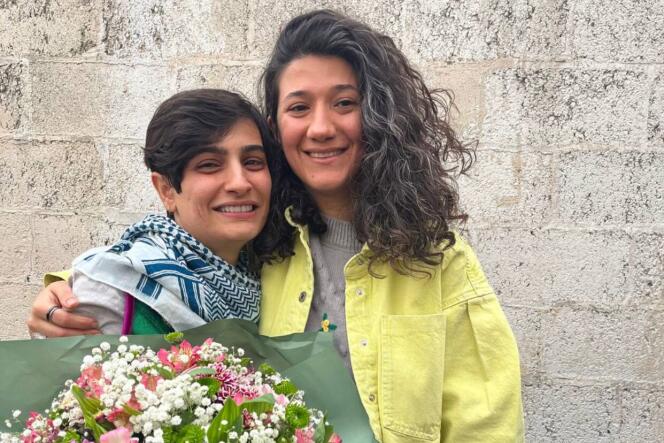Niloufar Hamedi and Elaheh Mohammadi, two Iranian journalists well known for their reporting on Mahsa Amini’s killing and their subsequent detention, were released from prison on bail of 100 billion Iranian rials (200 thousand dollars) following more than a year in custody. Their release was widely welcomed both within Iran and internationally.
The Tehran Provincial Appeals Court agreed to convert their detention orders to bail, and they will remain free until the appeal verdict is issued.
Hamedi and Mohammadi were initially arrested following the killing of Mahsa Amini in the custody of Tehran’s morality police. Hamedi, a journalist for Shargh newspaper, reported on Amini’s condition and published her photo in the hospital. She also covered the security forces’ response to protesters outside Kasra Hospital. Mohammadi, reporting for the Ham-Mihan newspaper, covered Amini’s funeral in Saqqez.
Hamedi was arrested in September 2022, and Mohammadi was detained a week later. They were charged with “collaboration with the hostile government of the United States, conspiracy to commit a crime against national security, and propaganda against the Islamic Republic.” Branch 15 of the Tehran Revolutionary Court sentenced them to 12 and 13 years in prison, respectively, in November last year. These sentences would be enforceable for six and seven years if upheld. In the primary court ruling, they were also banned for two years from “membership in political parties, groups, factions, and activity in cyberspace, media, and publications.”
Their release was celebrated by many journalists, civil and political activists, social media users and artists. The moment of Hamedi and Mohammadi’s release, after more than a year in prison, was widely shared on social media, with the two journalists holding hands and raising their arms in triumph for their newfound freedom.
Amjad Amini, Mahsa Amini’s father, expressed his happiness over their release in a message. He stated, “Dear Ms. Hamedi and Ms. Mohammadi, the news of your release, after enduring 400 days of prison and separation from your families, has delighted us all and sweetened our lives.”
The Tehran Journalists’ Association welcomed their release as a positive sign. It expressed hope that their temporary freedom would become permanent and extend to other imprisoned journalists. They criticized the heavy bail and reiterated that “journalism is not a crime and should not be treated as a security offense.”
In November 2022, the Ministry of Intelligence and the Intelligence Organization of the IRGC labeled them as “trained by the American mafia regime in foreign countries.” Both journalists spent over eight months in prison, including solitary confinement before their trial. They were deprived of the right to meet with family and lawyers. They met with their chosen lawyers in June 2023, just before their trial.
In the trial, both journalists denied all charges, insisting they performed their journalistic duties and pride for remaining “with the people.” The editors-in-chief of both newspapers have repeatedly stated that the reports were approved by them and that Hamedi and Mohammadi bear no responsibility.
Their imprisonment was met with extensive domestic and international protests. Human rights organizations and free speech activists condemned it. Over 200 Iranian journalists, writers, and literary figures had called for their release in a statement in October.
On the day of the Revolutionary Court’s verdict in Nov 2023, Iranian state television aired a documentary about Hamedi and Mohammadi, repeating the state’s charges against the journalists. This move faced widespread legal criticism for violating prisoners’ rights, as it undermined their right to a fair trial and they were unable to defend themselves from the charges.
Hamedi and Mohammadi’s release may prove short-lived as a result of new charges filed against them. One day after their temporary release, the judiciary opened another case against them for “improper hijab.” Elaheh Mohammadi wore a scarf similar to Palestinian keffiyehs and her vest featured colors reminiscent of the Palestinian flag upon her release, while Niloufar Hamedi wore a ski hat. According to the judiciary, this attire was interpreted as a violation of the hijab law. Their case is being processed at the Tehran Public and Revolutionary Court.
NIAC welcomes the release of these two journalists and condemns the unjust cases against them. Journalism is not a crime and Iran is obligated by international law to not inhibit freedom of the press, as it has done by arresting journalists for reporting on abuses by Iranian security services.
Back to top
